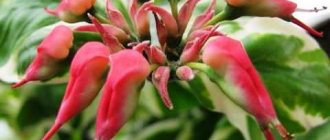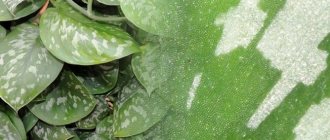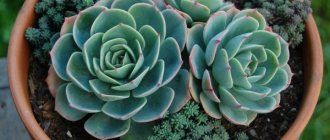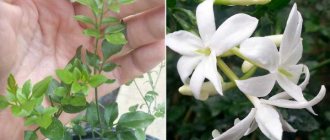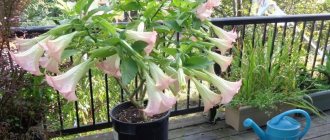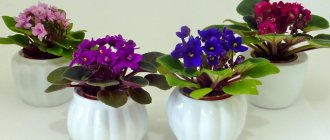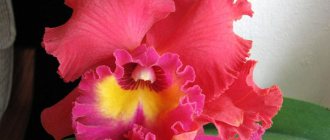Zantedeschia (calla lily) is a herbaceous perennial from the genus Araceae with an elegant flower on a straight peduncle .
It grows in a large bush and is characterized by intensive growth. The basal leaves are large, dark green; in well-developed specimens they grow up to one meter in height and up to 20 cm in width. The spike-shaped inflorescence-cob on a high arrow is wrapped in a tubular leaf-veil. The homeland of Zantedeschia is Africa, its southern regions and the island of Madeira in the Atlantic Ocean, near the northwestern African coast.
| High growth rate. |
| Zantedeschia begins to bloom in the fall and blooms throughout the winter. |
| The plant is easy to grow. |
| Perennial. |
Beneficial properties of zantedeschia
Zantedeschia (calla lily).
Photo Calla is one of the folk remedies for diseases. It has analgesic properties and is used to treat poisonous snake bites.
Without treatment, the plant is poisonous, but when exposed to heat and drying, the toxic substances in it evaporate. A decoction or tincture of crushed rhizomes helps with dropsy. Osteomyelitis is treated with calla lily leaves boiled in milk.
First steps after purchase
Choosing an adult plant in the store does not present any problems. Even without flowers, you can easily verify the health of Zantedeschia and the absence of mechanical damage. Buying tubers often carries a certain element of risk: the appearance of Calla lilies may well differ from the advertising label, and it is not always possible to see the defects of the tuber inside the package.
It should be firm to the touch, with a smooth, wrinkle-free skin, with viable buds, and free of ulcers and mold.
It is better to wait until the dormant period to replant an adult plant brought home. If the roots have come out above the ground level, you just need to add more substrate. Blooming or already blooming Zantedeschia reacts negatively to a change in location; you should not disturb it unnecessarily.
Caring for Zantedeschia at home. Briefly
Zantedeschia is grown in greenhouses with subsequent cut flowers, or as a potted crop at home.
| Temperature | Calla is thermophilic and does not tolerate temperature fluctuations. |
| Air humidity | Loves high air humidity. |
| Lighting | In its homeland, Zantedeschia chooses well-lit places and loves light. |
| Watering | The plant is moisture-loving; in natural conditions it prefers damp, swampy places. |
| Priming | You can buy a ready-made earthen mixture in a specialized store, or you can make it yourself. |
| Feeding and fertilizer | Needs regular feeding. |
| Bloom | The abundant flowering of calla lilies is facilitated by its timely transplantation, with the separation of offspring, and pruning of old flowers. |
| Transfer | Done once every two years. |
| Trimming | Pruning of young shoots is mandatory. |
| Features of cultivation | The main condition is to maintain a rest period of at least two months. |
Features of care
In summer, the plant can be planted in open ground in a place protected from the wind and midday sun. Faded flowers must be cut off along with the peduncles when the cover begins to turn green - the formation of seeds greatly depletes the plant.
The rest period of Zantedeschia lasts one and a half to two months, usually in winter. At this time, watering is reduced, yellow leaves are cut off, as are small shoots that appear at the base.
Zantedeschia Eliott has a pronounced dormant period. Her tubers are either dug up and stored in the refrigerator, or they are not watered at all.
Caring for Zantedeschia at home. Details
Temperature
In order for Zantedeschia to develop normally, it needs a temperature of 20 - 25 degrees Celsius. It can withstand short-term frosts. It does not tolerate drafts, stops flowering and gets sick in such conditions.
Do not place the plant close to heating devices, where the air is especially dry.
Air humidity
Calla loves moist air and spraying.
Especially in summer, it should be sprayed at least once a day. In conditions of high humidity, especially large, strong flowers bloom on it. Periodically, its leaves should be washed with warm water. Avoid too dry air and a dusty layer on the leaves of the plant.
During the heating season, when the air dryness in the apartment increases, you should place a container of water next to the plant. Or place the pot with the plant on damp expanded clay.
Lighting
Homemade zantedeschia needs good lighting at any time of the year. It tolerates partial shade, develops quite well in such conditions and even blooms. But if there is not enough light for it, it will stop blooming. And this will be one of the signals that it is necessary to increase the illumination of the plant.
But he likes diffused sunlight; constant exposure to direct sunlight reduces the intensity of flowering.
Watering
Since this plant naturally loves damp, swampy areas, zantedeschia at home needs abundant watering, especially in the warm season. In summer, calla lilies need to be watered at least twice a week. Do not let it dry out .
The soil should always be moist, but it should not be over-moistened. That is, it is unacceptable for water to accumulate and constantly remain in the pan. This leads to rotting of the roots.
In mid-summer, watering should be moderated. In winter, rare watering is allowed, but only if the room temperature exceeds 22 degrees. Water for irrigation should be at least room temperature.
Priming
You can grow zantedeschia flower at home using only clean peat. In this case, you need to take care of additional holes in the bottom of the pot and increase the drainage layer. But it is better to make a mixture of several components: clay-turf soil - 2 parts, humus - 1 part, sand - 1 part, peat - 1 part. This mixture will provide the plant with everything it needs for its full development.
Feeding and fertilizers
Homemade zantedeschia looks great with timely fertilizing: it has fresh, bright green foliage and large flowers on strong, long peduncles. It is necessary to feed the plant during its active growth and flowering.
Nitrogen fertilizers are used to improve leaf growth, and potassium and phosphorus fertilizers are used to ensure the timely formation of flower stalks. Feed once every two weeks.
During the flowering period, it is useful to do foliar feeding, for example, spraying the leaves with a solution of potassium humate.
Zantedeschia flowering
The plant blooms at the age of two years .
Flowering begins in autumn and continues throughout the winter.
Older plants bloom in early spring.
In order for calla lilies to bloom profusely, it is necessary to maintain a dormant period, provide it with sufficient lighting, and replant the plant once every two to three years.
Zantedeschia transplant
Due to the fact that calla lilies grow quickly, they require replanting every two years.
The old pot becomes cramped and the roots of the flower appear on the surface of the soil. Calla lilies can be replanted in spring or early November.
Pot for Zantedeschia (calla lilies)
Choose a pot 1.5 cm larger in diameter than the previous one. A drainage layer is placed on the bottom with small holes, and the rest of the space is filled with soil. Then, shake the bush out of the old pot (the plant was watered the day before) and plant it in a new pot with fresh soil. After this, water it with water at room temperature.
How to prune zantedeschia
During the period of active growth, when new shoots appear in the pot, they must be removed so that the main plant receives more nutrients. This will speed up the flowering of the calla lily, making it strong and beautiful.
Features of cultivation
Zantedeschia.
Photo In order for calla lilies to bloom profusely, it is necessary to promptly remove old flower stalks, as well as weak and yellowed leaves. In summer, it is advisable to place the flower in the garden or on the balcony, but not under the scorching sun and away from drafts. It is necessary to maintain a dormant period of 1.5 - 2 months, the plant must rest and gain strength for new flowering. In order to make Zantedeschia sleep, after flowering and the leaves dry out, you must stop watering the plant.
Growing conditions for Zantedes
Heat- and light-loving indoor callas require a special approach to wintering. They can be dug up during the dormant period and stored outside the soil. Or you can leave them in pots, providing a dry period of rest with simple care adjustments. But it is better to select the conditions more carefully.
Lighting and placement
For Zantedes outside the flowering period, any sufficiently bright place is suitable. She feels good in sunny areas, in diffused light and even partial shade, but will not tolerate strong shading.
During the growth of peduncles, the formation of buds and the opening of flowers, calla lilies require good, bright lighting without direct sunlight. This plant prefers 12 hours of daylight. In autumn, winter and in cloudy weather in spring, it is better for Zantedeschias to install additional lighting.
Important! Direct sun is “contraindicated” for Zantedes, even in winter.
Temperature and ventilation
For the dormant period (usually from October to the end of December), Zantedeschias are transferred to rooms with a temperature of about 10-12 degrees, completely stopping watering. But many modern hybrid varieties are able to “rest” even at a temperature of about 16 degrees. After transplanting, it is better to keep the plants in intermediate conditions, with a temperature of about 15-16 degrees, returning them to room warmth after the start of growth.
In spring and summer, callas will prefer cool places with a stable temperature of 20 to 22 degrees. Zantedeschia Eliot requires a cold dormant period of 2 months, which is best organized in the summer without disturbing the natural plant cycle.
Zantedeschia should be protected from any temperature extremes and sudden changes, lowering the temperature gradually. The plant does not tolerate drafts.
Zantedeschia ethiopica 'Green Goddess'. © WPC Prins
Diseases and pests
- Dark spots on the leaves of Zantedeschia are formed when the plant is infected with various fungi. They, in turn, appear as a result of poor air circulation in the pot with soil, with an insufficient drainage layer.
- Root rot also occurs due to constant excess water in the pot. Leaves and flower stalks begin to rot at the base and then break.
- Withering and drooping of zantedeschia leaves is observed if the zantedeschia is in a draft. It is necessary to change the location of the pot.
- Yellow spot . Ring-shaped yellow spots appear on the leaves, and the leaves themselves become thin and curly, which is not typical for Zantedeschia. Calla lilies are infected with this disease by thrips; the plant must be freed from them.
- Pests . Calla lilies are affected by pests such as spider mites, thrips, scale insects, and aphids. They are controlled with insecticidal drugs.
Transplantation and dormant period of Ethiopian calla lilies
How to plant Zantedeschi tubers photo
When the flowers on the plant begin to dry out, stop feeding and reduce watering, preparing for replanting and a dormant period. When the last flower falls, do not water at all.
- Replant in June-July, when there are no more flowers and the leaves also begin to die.
- Remove the plant from the pot, shake off the earthen lump, cut the leaves and flowering stems to the root.
- Take a spacious pot (diameter 20 cm and height 60 cm), lay drainage (pebbles, expanded clay, pebbles) about 4 cm thick on the bottom, add earth, place the plant in the center and add substrate, press slightly at the surface.
- The soil required is nutritious, loose, it is prepared on the basis of 2 parts of turf soil, also add one part each of peat, humus, leaf soil and sand.
After transplanting, place it in a bright place; it is advisable to maintain the temperature at first at 10 °C, then increase it to 15 °C. Water minimally. The appearance of new leaves indicates the end of the dormant period - then increase watering, and you can start feeding.
Reproduction of Zantedeschia
Reproduction by shoots
After the plant has flowered, you can begin to propagate it.
The shoots (sprouts) that appear around the mother plant are carefully separated and planted in separate spacious pots to a depth of at least 10 cm. Such deepening prevents lodging of the leaves. Offspring appear from children (root collars) formed on the mother's rhizome. Therefore, without waiting for shoots to appear around the bush, you can separate the children from the mother rhizome and plant them in separate wide pots.
Within two to three weeks, stronger young shoots will appear from them than if we separated the already grown shoots from the plant.
Growing zantedeschia from seeds
The plant can be propagated by seeds. They are germinated in a warm place, at a temperature not lower than 25 - 27 degrees.
The seedlings, after they get stronger, need to be pricked: planted in a larger pot with the roots trimmed to allow lateral roots to appear. This improves plant nutrition and promotes the development of a strong root system.
But we must remember that when propagated by seeds, the plant blooms only after five years.
Types of homemade zantedeschia with photos and names
Zantedeschia aethiopica
This variety is unpretentious and has larger flowers compared to other callas. It is distinguished by its dazzling snow-white cover and bright yellow inflorescence-cob. The height of the plant is up to 100 cm, the size of the bedspread is up to 25.
Zantedeschia odorata
Smelling calla lilies are also called fragrant. Outwardly, it resembles Ethiopian. But unlike it, it has the fragrant aroma of lily of the valley. This is a rare variety of calla lily.
Zantedeschia elliottiana
The flowers of this calla lily reach a height of only 16 cm. But gardeners love it for its beautiful, bright yellow cover. Green leaves are speckled with white. The variety is named after the American botanist Stephen Elliott.
Zantedeschia rehmannii
The height of this hybrid is 40-50 cm. It has elongated, long leaves, unlike other callas. The leaf width is no more than 5 cm. The flower cover is pale pink. The inflorescence is bright yellow.
Popular varieties
The genus is not numerous. According to various sources, it includes from six to eight plant species. Most of them are found in indoor culture. In addition to natural forms, breeders have developed hybrid varieties with interesting colors and bright decorative characteristics. Five types are considered the most popular.
- Zantedeschia ethiopica. Herbaceous perennial with developed rhizome. It features beautiful heart-shaped leaves. The inflorescence—the spadix—blooms high above the leaves. The cob is yellow, the spathe is white, waxy. The most famous variety of calla lilies.
- Zantedeschia whitespotted. The largest variety with arrow-shaped oblong foliage. The characteristic color is green, with spots of white. The stems are straight, the leaves are attached to them by elongated petioles. The cover is white or pale yellow, the base is painted purple.
- Zantedeschia Elliott. A low-growing variety with elongated heart-shaped leaves. The color is green, with white streaks. The cover is pale yellow on the inside and yellowish-green on the outside.
- Zantedeschia Remanna. A relatively low species - it grows no more than 65 cm. The spathe around the cob is pink, the root system is tuberous.
- Zantedeschia mix. Not a separate variety. It is a mixture of hybrid varieties of different colors.
Caring for zantedeschia during the flowering period - maintaining favorable conditions. Maintain a moderate air temperature in the room - no higher than 25°C, regularly water and spray. Low humidity can lead to bud drop; it is regulated by installing humidifiers and placing containers of water around the pot. Avoid drafts and direct sun.
Zantedeschia hybrids
"Memories"
The color of the bedspread of this calla lily is unusual, black with a burgundy tint, up to 12 cm in size. The inflorescence is the same, black and burgundy, as the bedspread. Plant height is from 45 to 50 cm.
"Nashville" (Nashville)
The shape of the perianth of this calla is elongated and narrowed, the color is two-tone: white and pink. The inflorescence is bright yellow. The size of the bedspread is 12 cm. The plant is compact, up to 45 cm tall.
"Picasso" (Picasso)
The flower is white at the edges, transitioning to a purple throat. The height of the peduncle is up to 15 cm, the spathe is 10 cm. The flowering time of one flower is up to 25 days. The dark green leaves have white spots that take on a metallic tint in the sun.
"Red Alert"
The height of the plant is up to 55 cm. The flower consists of a small bright red blanket and a red inflorescence. The blanket is elastic, shiny, like wax. The leaves are covered with frequent, white specks.
"Pink Mist"
This hybrid produces several flower stalks up to 35 cm long. The pale pink color of the bedspread with a bright orange inflorescence is unusual. The flowers are small, up to 10 cm.
Description of the plant
Heat-loving and moisture-loving, Zantedeschia is not an ordinary representative of the Araceae. This is one of the most famous indoor flowering tuberous species. The name Zantedes still causes a lot of confusion. The plant used to be transferred from generation to generation so often that the former names - calla lily, calla lily and even arum - are still popular.
Indoor zantedeschias reach a height of 40 to 80 cm. Their basal leaves are very beautiful. Large, up to 45 cm in length with half the width, surprisingly numerous for a tuberous plant, ideal heart-shaped or arrow-shaped, with large waves and solid edges. The leaves bloom on elegant petioles up to 40 cm long. The color of greenery is always rich, intense, and seems very bright. During the dormant period, Zantedeschia loses its leaves.
It is not for nothing that the flowering of Zantedes has become symbolic. Strong, up to 80 cm tall, straight, thick, usually green peduncles ending in a yellow inflorescence spadix. It’s as if a covering sheet-bedspread is wrapped around it like a funnel - an elegant heart-shaped “sail” with an absolutely impeccable shape and a pulled-curled tip.
Zantedeschi is almost always characterized by a very long flowering period, although the timing always varies depending on conditions and care. In an ideal environment, Zantedeschias are able to bloom from January to May.
The plants are poisonous and should be grown with caution in a home where there are small children and pets. But only contact of the juice with mucous membranes and getting it inside is dangerous.
